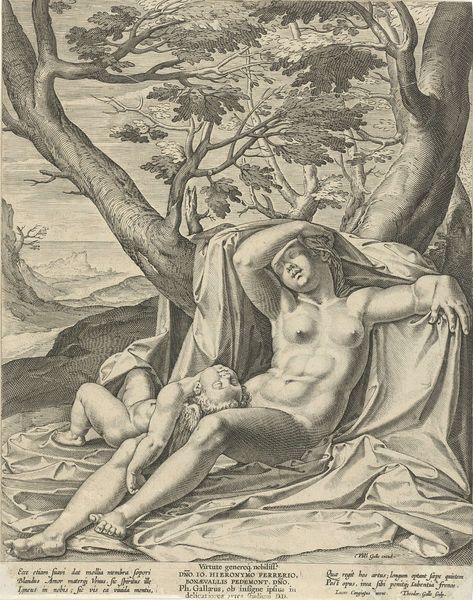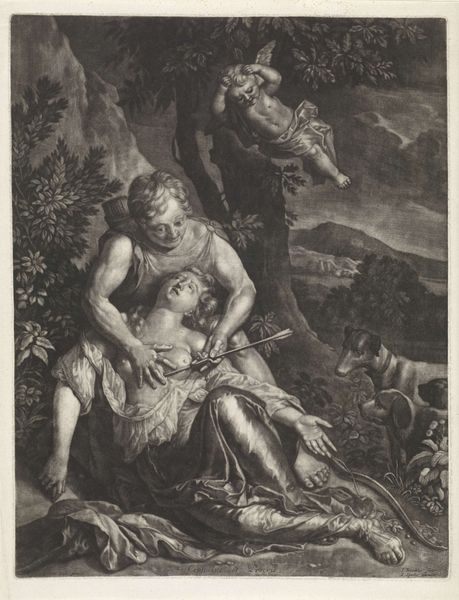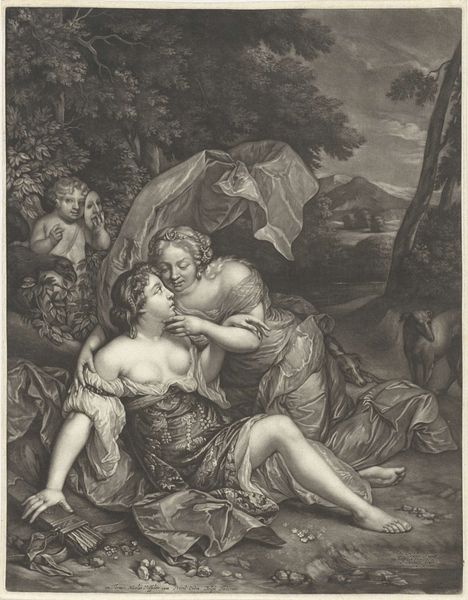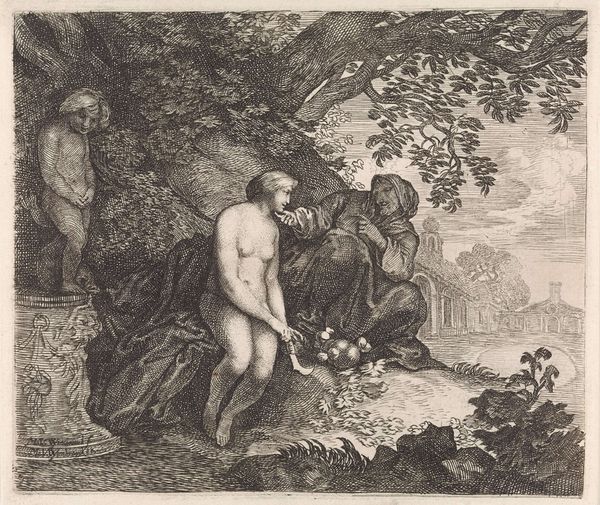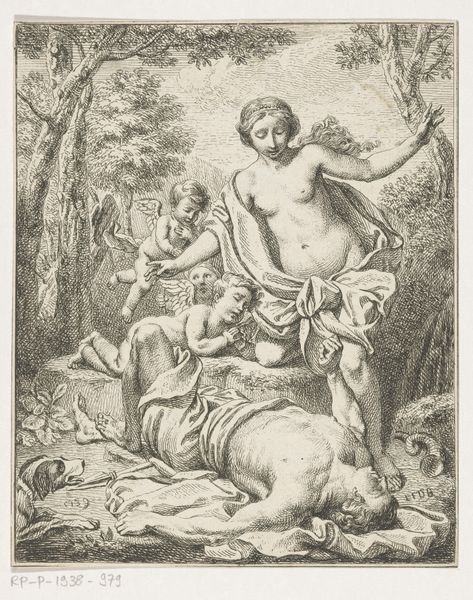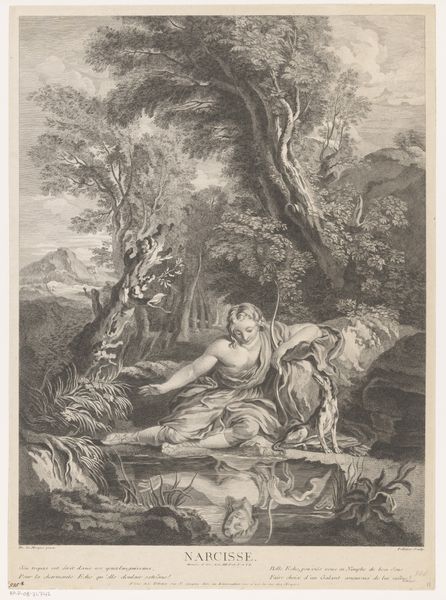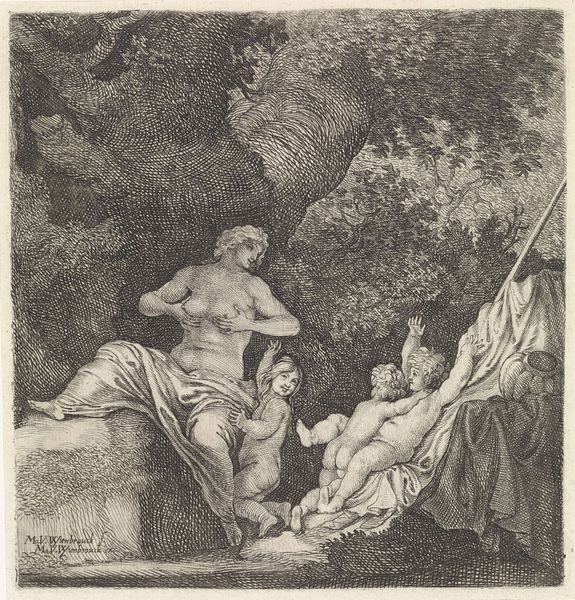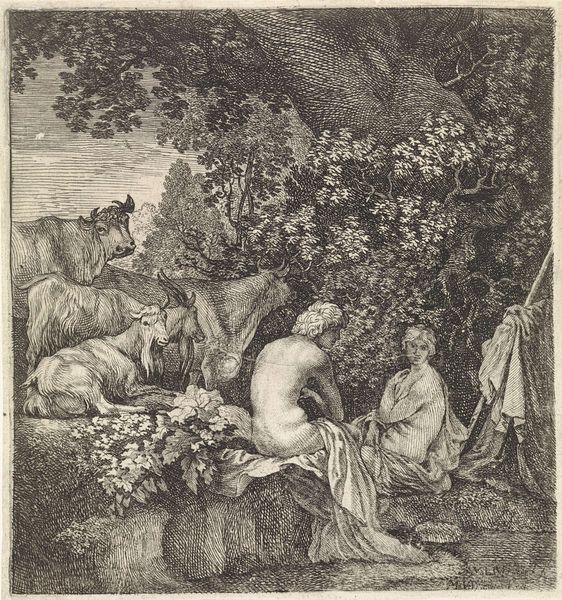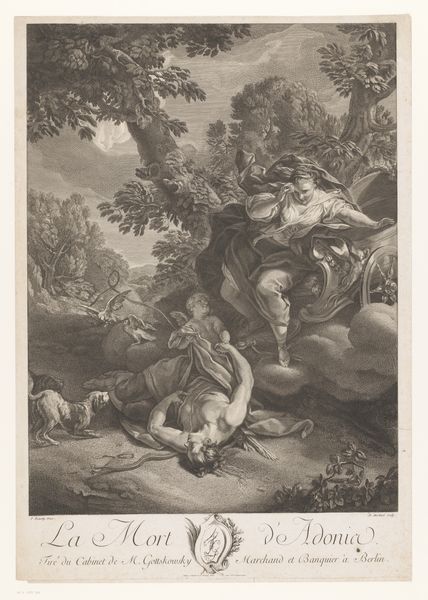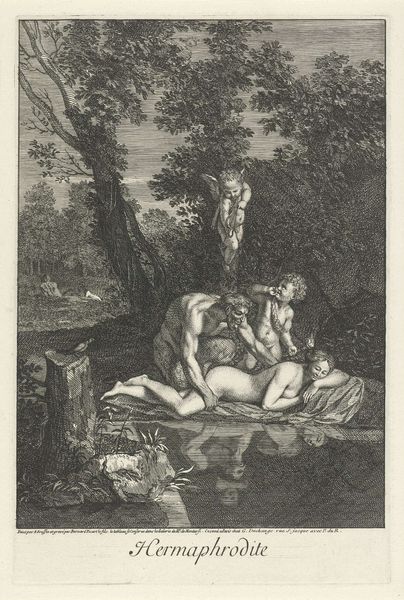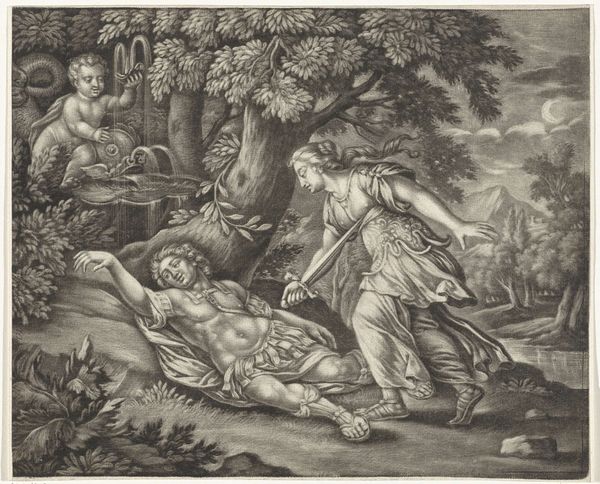
oil-paint
#
baroque
#
oil-paint
#
landscape
#
figuration
#
oil painting
#
history-painting
Dimensions: support height 131.5 cm, support width 114.5 cm, support thickness 3.5 cm, outer size depth 7.3 cm
Copyright: Rijks Museum: Open Domain
Editor: Here we have Paulus Bor's oil on canvas, "Pharaoh's Daughter Discovers Moses in the Rush Basket," created around 1635 to 1638. I'm struck by how the composition uses both cool, watery tones and warmer, earthy hues. It's a serene yet dramatic scene. What do you see in this piece from a formalist perspective? Curator: Immediately, I observe the painting's calculated structure. Note how Bor employs a pyramidal composition, drawing the eye from the water nymphs up to Pharaoh's daughter. The lighting, or rather, the chiaroscuro, is deployed not for narrative clarity but for dramatic emphasis. The contrasting light and shadow create a visual hierarchy. Editor: The use of light certainly adds depth. Does the landscape serve a structural function as well? Curator: Precisely. Consider the recession into space. The landscape isn't merely a backdrop; it functions as an integral component of the composition. It leads the eye, creating a sense of depth and balance. The contrast between the detailed foreground figures and the atmospheric perspective in the background establishes a spatial dynamic. The texture of the brushstrokes contributes to the work's materiality, reminding us of the physical act of painting. Editor: So, it's less about the story itself and more about the way Bor constructed the painting? Curator: Exactly. While the narrative is present, our analysis focuses on how Bor's deployment of line, color, and composition generates meaning. The forms themselves, and the relationships between them, dictate our understanding. Are there particular compositional elements that resonate with you? Editor: I appreciate how you pointed out the relationship between form and meaning, focusing my attention on the artwork's elements instead of cultural aspects. Thank you! Curator: And I, your observations on the painting’s tone; this emphasizes the potential complexity inherent within even formalist readings.
Comments
No comments
Be the first to comment and join the conversation on the ultimate creative platform.
